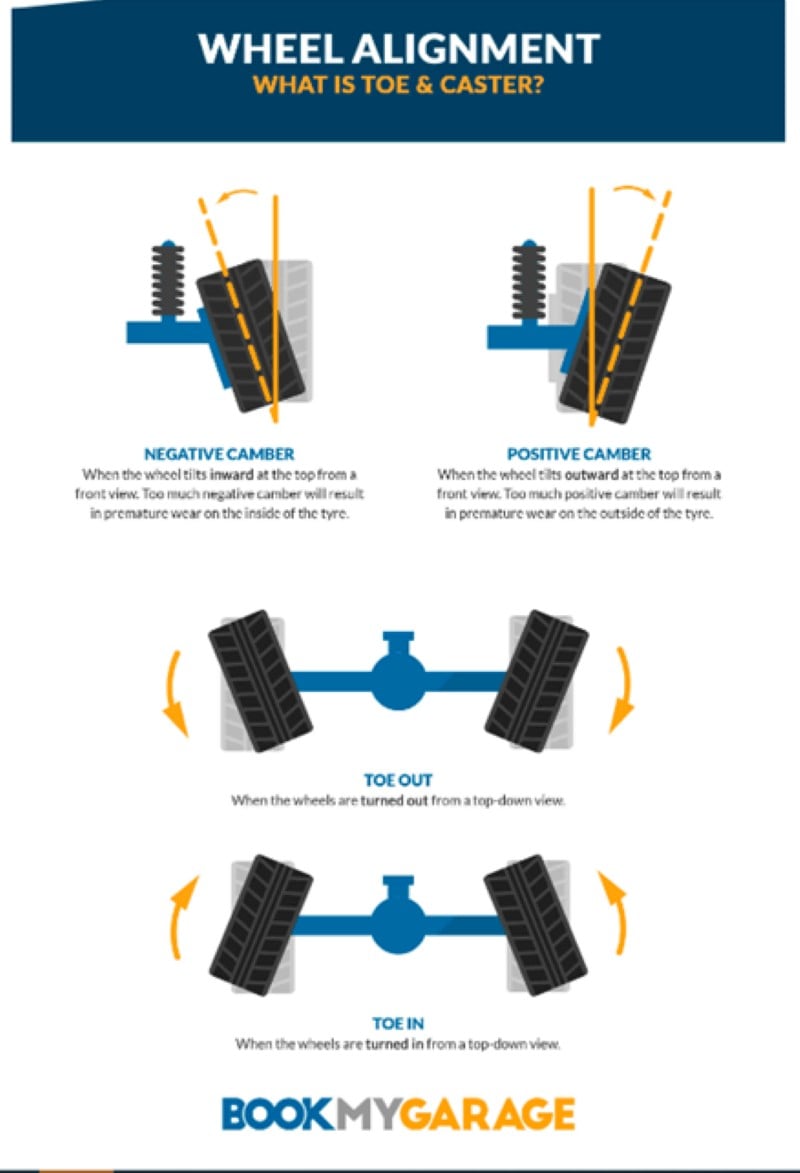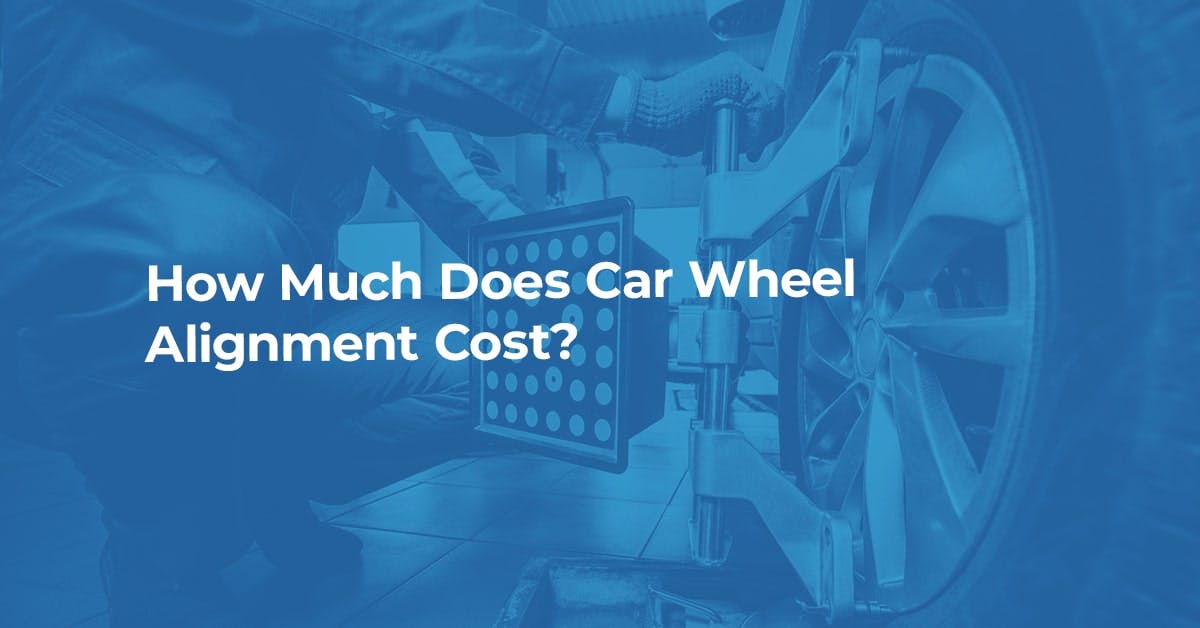Sometimes known as tracking, proper car wheel alignment is essential in preventing excessive tyre, steering, suspension and brake wear.
Your wheel alignment is important and should be checked once every 2 to 3 years.
Find out how much wheel alignment costs in the UK, why it is important, and what will happen at your wheel alignment appointment.
Page Contents
- How Much is Wheel Alignment?
- What Is the Average Wheel Alignment Cost in the UK?
- What Causes Wheel Alignment Problems?
- Is Wheel Alignment Important?
- What Will Happen at My Wheel Alignment Appointment?
- How Long Does Wheel Alignment Take?
- How Long Does It Last?
- Is Wheel Alignment the Same as Tracking?
- FAQs
How Much is Wheel Alignment?
The average car front wheel alignment cost in the UK is £40.85, according to bookings made through BookMyGarage.
UK Car wheel tracking costs can vary depending on your location and the type of vehicle you drive.
We would suggest booking wheel balancing alongside your wheel alignment, raising the price slightly by £5 to £10 per wheel.
What Is the Average Wheel Alignment Cost in the UK?
The table below shows the average UK tracking cost for 26 popular makes of cars.
Please note that these average costs are based on bookings made through BookMyGarage between January 1st 2020 and July 1st 2023.
|
Make of Car |
Average Wheel Alignment Cost UK |
|
Audi |
£41.07 |
|
BMW |
£44.65 |
|
Citroen |
£39.68 |
|
Fiat |
£40.93 |
|
Ford |
£39.47 |
|
Honda |
£40.13 |
|
Hyundai |
£41.44 |
|
Jaguar |
£44.99 |
|
Kia |
£41.02 |
|
Land Rover |
£49.76 |
|
Mazda |
£40.34 |
|
Mercedes-Benz |
£42.99 |
|
MINI |
£42.72 |
|
Mitsubishi |
£41.77 |
|
Nissan |
£39.65 |
|
Peugeot |
£38.65 |
|
Renault |
£36.8 |
|
Seat |
£38.41 |
|
Skoda |
£39.33 |
|
Toyota |
£39.54 |
|
Vauxhall |
£38.65 |
|
Volkswagen |
£40.68 |
|
Volvo |
£42.11 |
What Causes Wheel Alignment Problems?
Your wheels may be knocked out of alignment if you hit the kerb or drive forcefully over bumps and potholes.
Wheel misalignment can be caused by issues with the suspension components, such as poor shocks or struts.
Your vehicle could also be experiencing wheel alignment problems if you have had the height of the vehicle modified.
Is Wheel Alignment Important?
If your wheels aren't properly aligned, this can lead to premature tyre wear and even make driving dangerous.
Your car may start pulling to the side, even if your steering wheel is straight.
You can enjoy improved handling, better fuel efficiency and a more comfortable ride when you book a wheel alignment appointment when needed.
What Will Happen at My Wheel Alignment Appointment?
A mechanic will use specialist equipment to complete your wheel alignment.
You should not attempt to adjust the alignment of your car’s wheels yourself.
When the steering wheel is pointing straight, the front wheels should do the same.
With the steering wheel in its most central position, the mechanic will attach clamps to each wheel.
A computer uses reflections from these clamps to calculate which adjustments are needed.
The machine can measure the alignment more accurately than the human eye to catch even the slightest misalignment.
It also checks your wheels’ camber (the angle of the wheel) and toe (how straight the tyre sits on the wheel).
When both are set correctly, you will notice an improvement in handling and stability.

How Long Does Wheel Alignment Take?
Wheel alignment can take anywhere from 30 minutes to 2 hours to carry out, depending on the vehicle in question.
How Long Does It Last?
Manufacturers tend not to put timeframes on how long a car wheel alignment will last.
It is recommended that you have your wheels aligned every 2 to 3 years.
You may need a wheel alignment sooner if you drive over a kerb or a pothole.
You should book a wheel alignment if it has been 3 years since you last had your wheels aligned.
You should also have your wheels aligned when new tyres are fitted on your car.
Is Wheel Alignment the Same as Tracking?
Wheel alignment may be different to wheel balancing, but tracking is the same as wheel alignment.
Tracking is a more informal term for wheel alignment, referring to how well your wheels align with each other and the rest of your car.
Your car may have a tracking issue if your tyre tread seems unnaturally wide.
To keep your wheel alignment price low, you can compare deals easily on BookMyGarage.
You can save up to 70% when you search using our comparison tool instead of going to a main dealer.
Just enter your reg and postcode into the booking tool below to get started.
FAQs
Does My Car Need a 2- or 4- Wheel Alignment?
How Much Does Wheel Balancing Cost?






